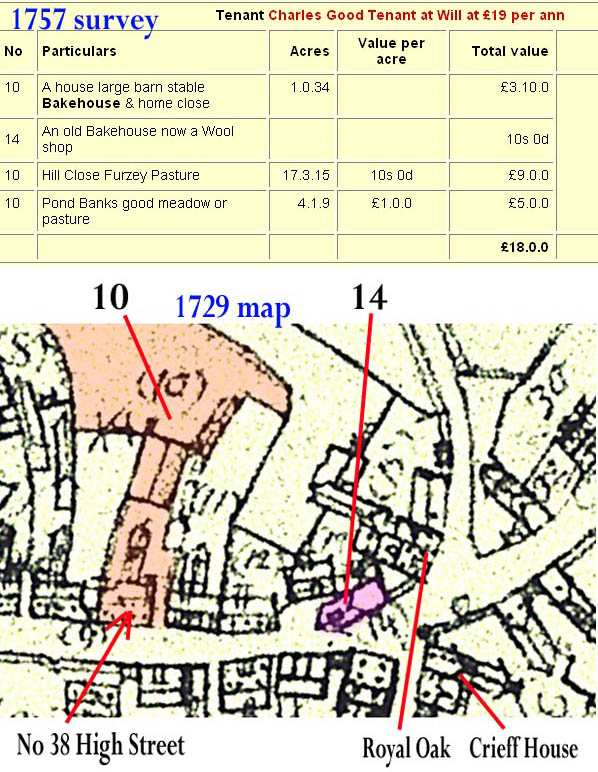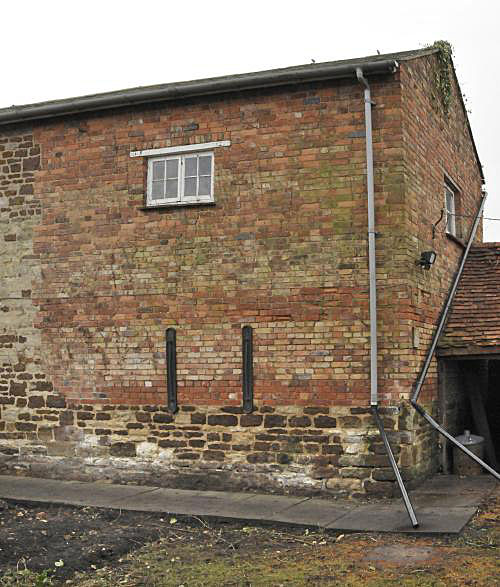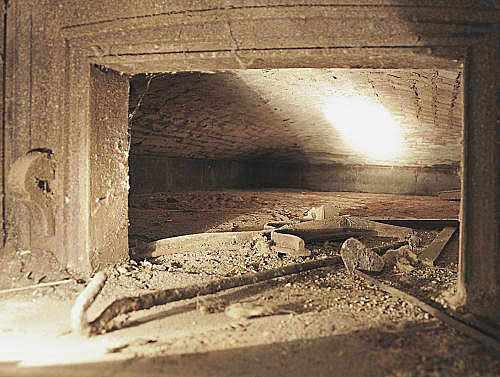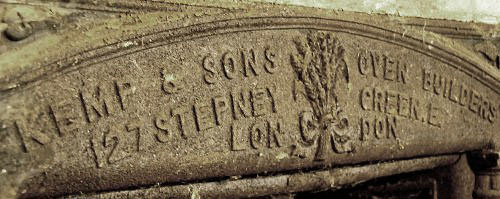|
Blisworth Baking
The location of the chief bakery in Blisworth has been somewhat varied - sites I through IV are described in the following. In around 1757 it was in the rear of the cottage now known as 38 High Street (site II) but before that it was evidently located in a house (site I) known more recently as Mrs. Huggett's Sweet shop. The table and map diagram below show these two places which carried Grafton Survey numbering of 14 and 10. The table owes its format to the careful transcription work of Mrs. S. Blake of Grafton Regis.
Both houses were in the tenancy of Charles Good in 1757 but records clearly show that the 38 High Street bakery was run by a John Staughton or John Stalton (the spelling is uncertain) up to nearly 1757. There is no record of the earlier baker, perhaps of the 17th century, at the house near the Royal Oak but on this website are images of its demolition and there is quite an extensive flue at the rear of the house. There is a little more information on John Staughton in S. Dyster's account, on this website, of the Blisworth Baptist movement (the textual reference is here and more is to be found at footnote #1 of that document). The current occupiers at 38 High Street moved in in the early 1960s to find a roofless tumbled down barn at the back which had been used as a store room for community trestle tables and chairs. There was no oven equipment found there at all. The barn was demolished to make room for an extension and garden landscaping. We can now fast forward to the mill fire in Stoke Road in 1879. The mill was run by Joseph Westley and by his parents before him. It is reasonable to expect both milling and baking at the same premises at least since about 1838 so this is premises number III. The fire caused the loss of the mill but apparently not the bakery and Joseph Westley set up a better mill by the canalside. Baking continued at Stoke Rd. by the Westleys until the death of Joseph prompted the family to quit in 1895. The mill was then taken over by a local co-operative and the Stoke Road property was occupied by the Sturgess family who were the new village bakers. They probably used the ovens that were already installed there. In the first section of the personalities pages is a picture of baker Sturgess senior and his son and the next picture shows Sturgess senior with his delivery van. Sturgess junior was born at the Stoke Road premises in 1901 and started work when he reached 13. They delivered bread to the surrounding villages using a horse and cart but obtained a Ford van in 1919 which is supposed to be the van shown in the picture. Prior to that purchase it was often necessary in winter to borrow a stronger horse to get through the snow and even get the blacksmith to add screw-in studs to the horse's shoes for a better grip in the snow. Some of the details of life before WWI was gleaned from a newspaper article written in 1977 after interviewing Sturgess junior. He recalled June 22 1911 as it was his tenth birthday as well as King George V Coronation Day. The whole village went to the Blisworth Hotel gardens and were transported there, if necessary, by Westley's wagons. There were regular Summer outings too. This entailed taking a railway trip to the seaside as the rail companies virtually "invented" the seaside holiday and did much to promote them. There is no record of where were the popular spots accessible from Blisworth. In those days the roads were very quiet allowing pastimes such as whipping a spinning top down the centre of the road. A record was established in continuous-whipping all the way to Milton Malsor which was impressive considering all the tufts of grass growing in the road. Every Sunday it was a village custom to bring joints of meat to the bakery for cooking, the reason being that cottage ovens were too small. Sadly, the sight of people marching through the village with steaming pots of dinner ended around 1935 when gas was laid on in the village and the first gas stoves were available. There is a hint that the Sturgesses were tenants to the Westleys at the Stoke Road premises, rather than possessing freehold, for they were induced to depart, the site being taken over by a new firm, the British Bacon Company. The Sturgess business moved to a location in the High Street, in 1922; that is site IV. In those times a 4lb. loaf would cost 3½d or about 1½p - and that's for an enormous loaf by modern standards. The Sturgesses established their business in the High Street in a brick built extension added to the rear of a stone rear extension to what had become a double cottage unit. The brick extension is shown in the next picture* below. They also offered for sale some well known makes of bread as evidenced by the large "HOVIS" sign attached to their house for many years. It might have been thought that the oven in the first picture was the one in use at the old mill site in Stoke Road. However it is definitely the oven at the house in the High Street and it seems very likely that Sturgess had a new oven installed there.
Those cast iron braces on the wall are the termination for four steel rods which hold the brick extension together despite the push from within that is the result of a shallowly domed oven roof. The oven appears to have an inside floor area of eight foot square. The view in the next picture clearly shows features exactly as they appear in the picture of father and son, referred to previously.
The 1920s contractors, Kemp & Sons, probably specified the building and then installed their own casting as braces on the outside. Their three addresses in Stepney Green, E London, including Lupton House, were sites of a small oven manufacturing business which was established in the 1850s by John Kemp and which survived until the 1960s. The site of "Kemp's Yard" was cleared in 1968 to make room for flats. This was reported in the Enfield Archaeological Society records. It would be interesting to known whether this oven, which must now be taken out to make room for the new occupiers' lounge, has famous sister ovens elsewhere in the Empire! There is a Kemp oven still in the wall outside the old bakery shop in Banham, Norfolk, and one on display in the Rye Museum. Since loading and unloading the oven was via the only hatch door at the front, it is thought that the oven was heated using trays of burning coke which were periodically replaced with trays of tinned-up dough.
|




